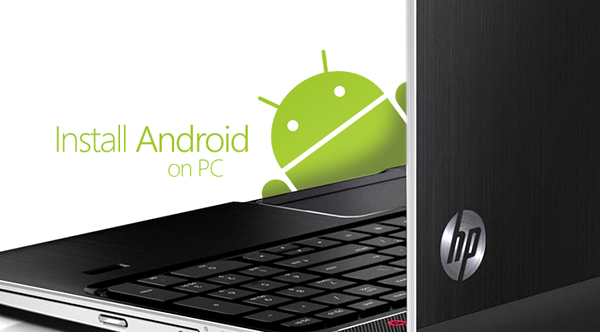How To Install Android KitKat On Your PC Natively
By | April 5th, 2014
When we talk about Android, what’s the first thing that comes to your mind? I bet 99% of the people will answer smartphones or tablets (unless there’s an app that you’re crazy about and that’s what you prefer). However, Android, being the open source platform that it is, offers much more flexibility in terms of the hardware that it can run on, and so there’s Android out there that can run just fine on x86 computer architecture as well. Yup – full-blown Android running natively, not the likes of BlueStacks! In this post, we’ll show you exactly how to get that.
Before we begin, let’s take a look at what Android on a PC is all about. Dubbed Android-x86, it’s (an) unofficial build(s) of Google’s operating system designed specifically to work with Intel’s x86 hardware architecture. That’s something that Android on Intel project gives you anyway, which is available for the likes of Dell XPS12. However, Android-x86 takes that one step further by extending support for a number of other hardware manufacturers as well. It, too, supports the latest Android 4.4 KitKat, and is quite easy to set up.
Please note that you choose to follow these instructions at your own risk. Redmond Pie will not be responsible for any potential damage to your hardware as a result of following this guide.
Prerequisites
- Android x86 ISO (please download the most appropriate version)
- USB Flash drive (you may use a bootable CD/DVD as well)
- Free hard disk space on the computer/laptop that you want to install Android on:
- For Froyo – ICS, 2GB
- For Jelly Bean 4.2 and 4.3, 8GB
- For KitKat 4.4.2, 10GB
- UNetbootin (for creating bootable USB thumb drive) which you can grab from:unetbootin.sourceforge.net
Step 1: Download the version of Android-x86 ISO that’s appropriate for your hardware, and UNetbootin.
Step 2: Create a bootable USB drive using UNetbootin and the ISO image that you downloaded earlier. Simply click on the Diskimage button as shown in the screenshot below and point it towards the ISO you downloaded in step 1.

Step 3: Reboot your computer using the USB drive as the source. You might need to change a couple of settings under your system’s BIOS to do that, although most modern systems already default to USB drive if it’s available.
Step 4: In the menu that appears, choose Install Android x86 to hard disk.
Step 5: Choose which partition to install Android x86 on. If you’re using a new partition for that, it’s better to format it at this point.
Step 6: A few prompts will appear pertaining to installation of GRUB Bootloader. Make sure you allow this.
Step 7: Now, another prompt will ask you to make system /r/w. Hit Yes on this as well, especially if you’d like to modify your Android x86 installation later.
Step 8: If you’re installing ICS or earlier, you will get another prompt to install virtual SD card. Use 1800 MB for space, as that’s the maximum supported.
Step 9: Reboot your PC.
That’s all there is to it. Since this will be a multiboot setup, you can choose to either boot to Windows or Android per your liking.
We’ve already done a guide on how to: install and run Android 4.0 on Mac, Windows PC or Linux using VirtualBox Virtual Machine, but this method offers users a truly native experience.
For technical assistance and more, head over to the source link below.
(Source: XDA-Developers)
Tiada ulasan:
Catat Ulasan